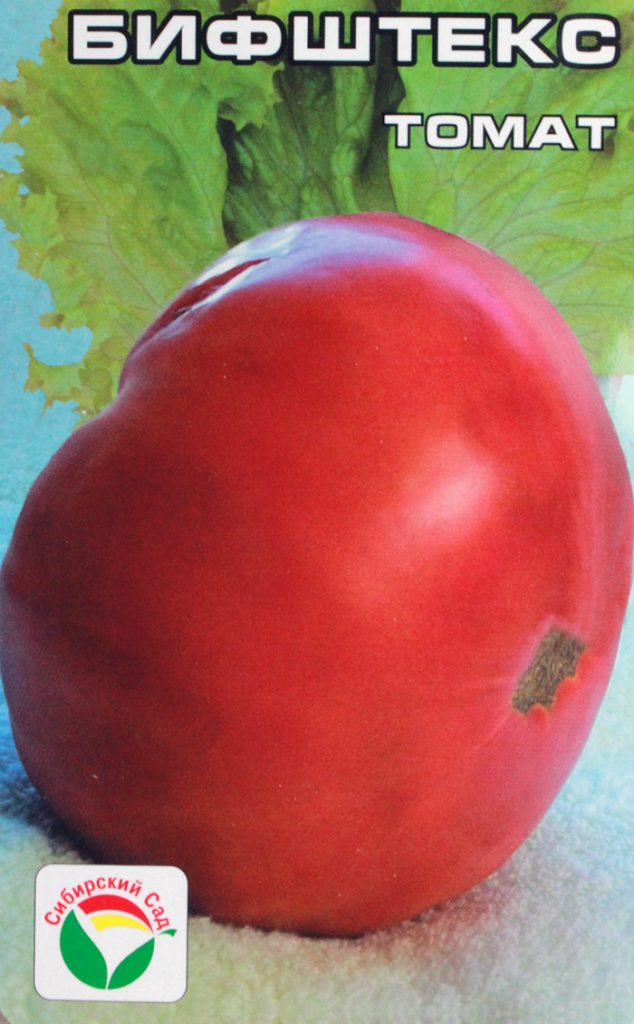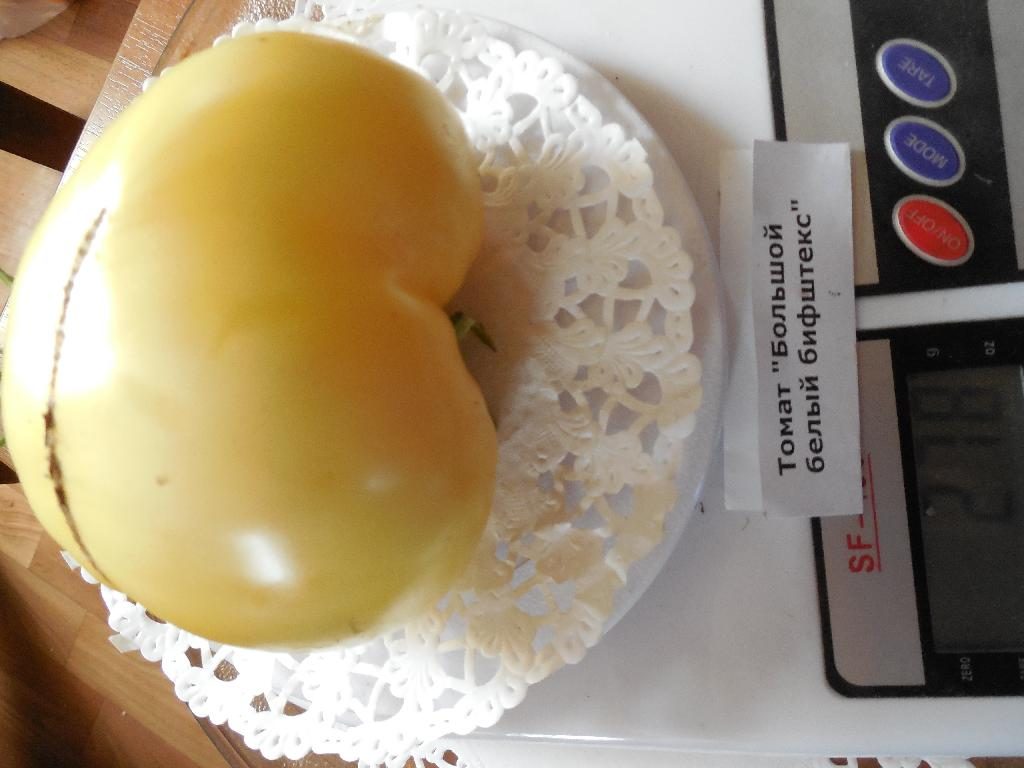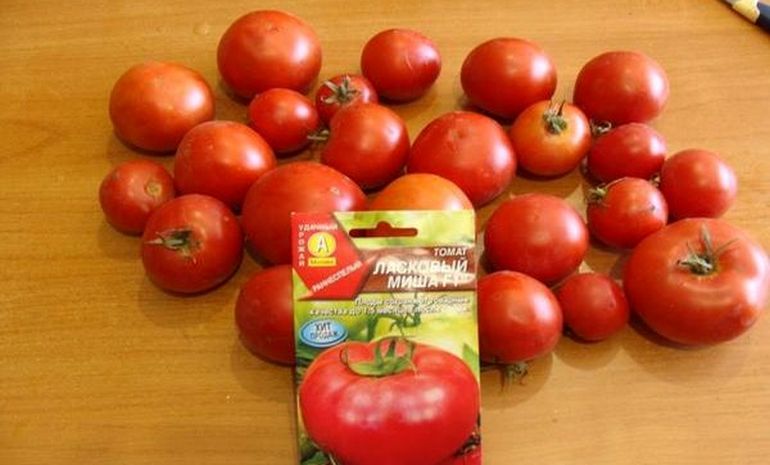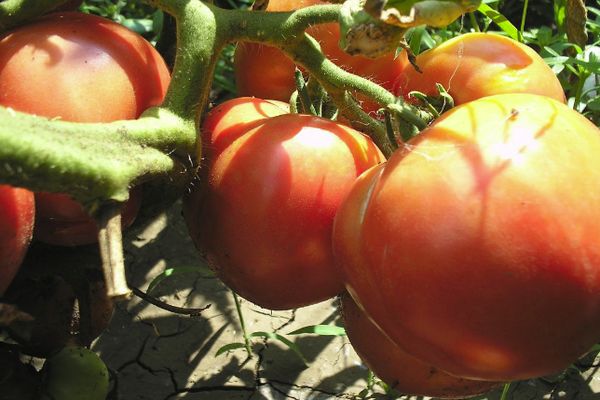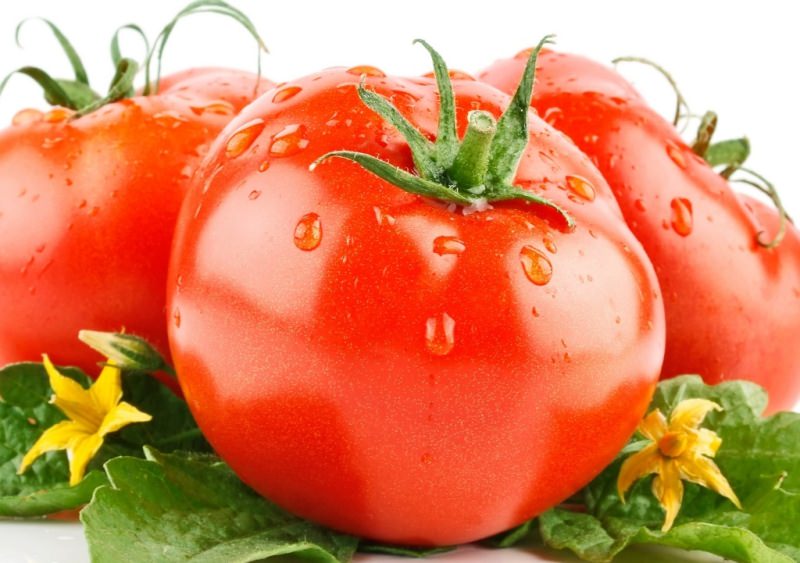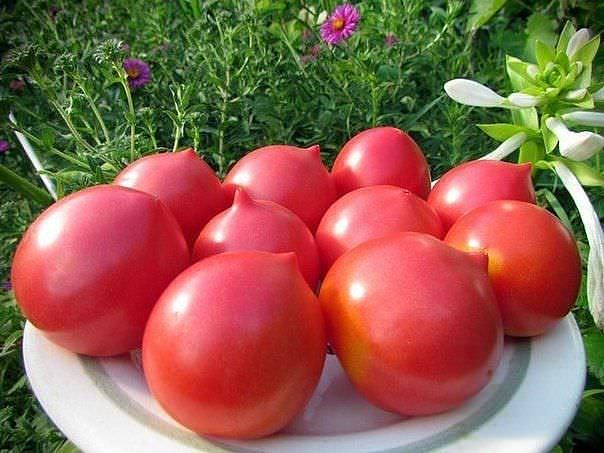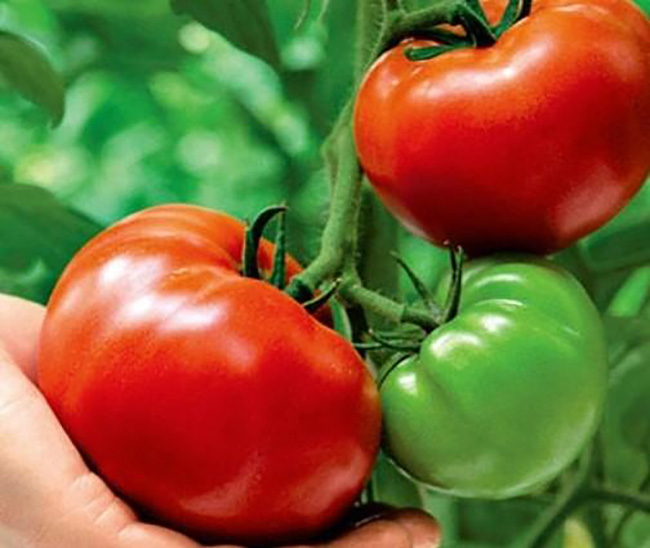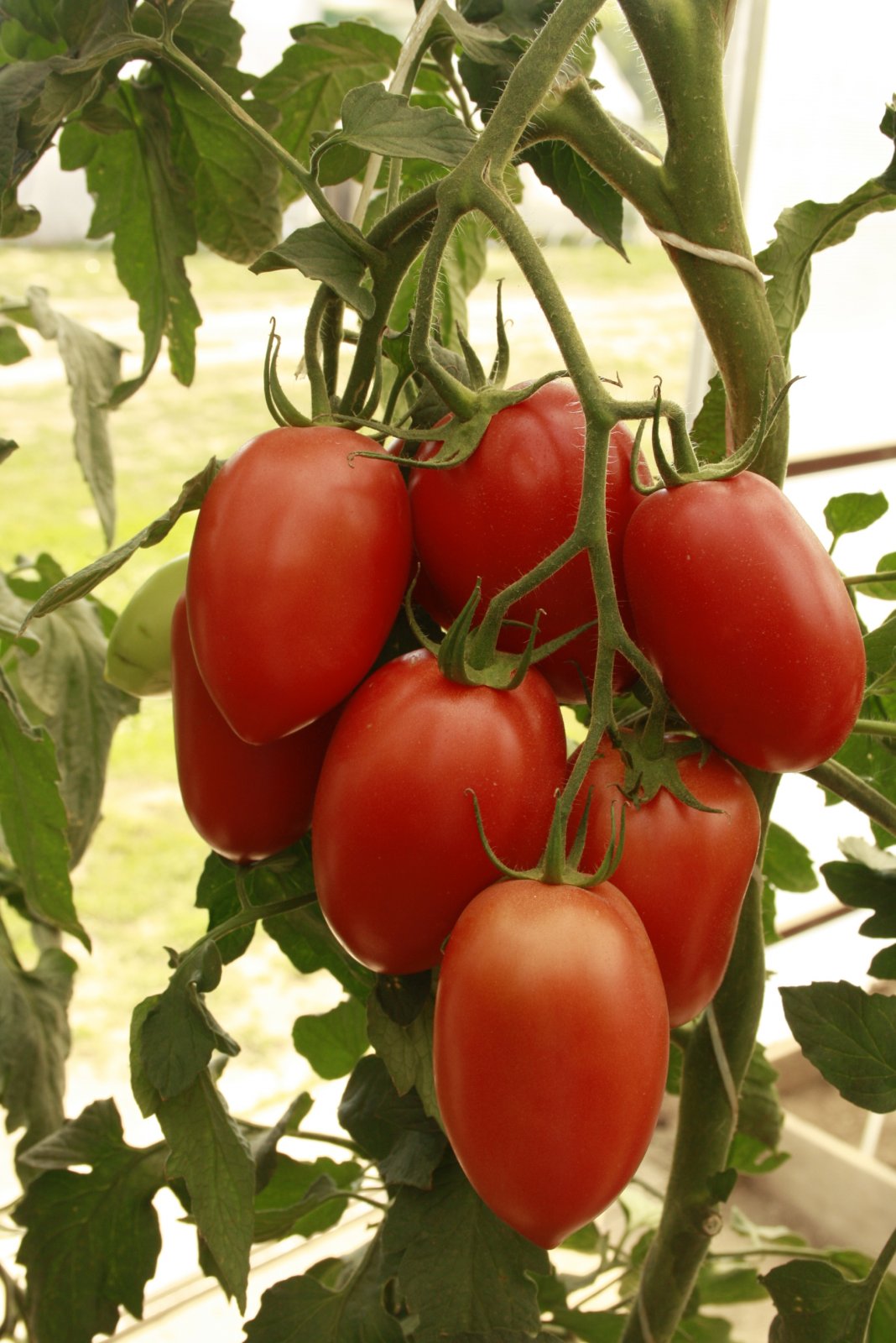If a gardener wants to grow large tomatoes on his plot, then he should pay attention to the Beefsteak variety. The plant received such an appetizing name for the excellent taste and meatiness of the fruit. These tomatoes are difficult to find on the shelves, as they do not tolerate transportation well. To enjoy them, you need to grow a culture in your garden.
Culture information
Tomato variety Beefsteak was bred by the selection and seed-growing company "Poisk". These seeds are also sold by other well-known companies: Sibsad, Aelita.
The steak is recommended for growing under a greenhouse shelter, but it also thrives under the open sky in the southern regions of Russia.
Tomatoes Beefsteak are widely used in cooking. They are used fresh and for the preparation of tomato juice. They are also suitable for preparing various dishes, especially for sandwiches and pizzas. Winter preparations are also good of them, only for this it is necessary to cut the fruits into slices, since the tomatoes are large in size.
Tomatoes Beefsteak have a wonderful, slightly sweet taste. They contain significantly more pulp than juice and seeds. This variety of tomatoes is appreciated by vegetable growers for its high content of vitamins and other nutrients.
There is also a variety of tomatoes Big White Beefsteak. Its ripe fruits have a milky white color, unusual for this culture, with a slight pinkish tinge. In terms of taste and parameters, the white variety practically does not differ from the red one.
Characteristics and features of the variety
Tomato Beefsteak characteristics and description of the variety:
- The plant is an indeterminate variety, that is, it is not restricted in growth. The height of the bush can be incredible, so it is mechanically adjusted. Vegetable growers recommend removing the top at a height of 2 m;
- The leaves of the plant are medium in size, green;
- The bush is strong, grows up to 1 meter wide. Because of this feature, it is necessary to plant the bushes sparsely. Otherwise, they will not have enough area to form large fruits;
- The formation of bushes occurs from 1 or 2 stems, and in white specimens - from 2 or 3 stems;
- The brush is simple, usually about 5 tomatoes ripen on it. The fruits will be much larger if 2-3 ovaries are left on the brush, and the rest are removed;
- Fruits are bright red or milky, depending on the variety;
- Form - flat-round with small ribs;
- The average weight of one fruit is 300 grams. Subject to the recommendations for agricultural cultivation and care, the weight of tomatoes can be much higher;
- The skin of the fruit is thin, so they cannot be stored for more than a week and cannot tolerate transportation;
- The number of seed chambers is 6, the content of seeds in them is small;
- Beefsteak is a medium early tomato variety. However, summer residents believe that this variety ripens as mid-season. The first harvest can be obtained in 80-85 days from planting seedlings;
- Productivity - about 8 kg per 1 sq. meters.
Having familiarized yourself with the properties of the tomato Beefsteak, it is worth adding to the description of the variety that the plant is highly resistant to certain diseases. Tomatoes practically do not get sick with tobacco mosaic, cladosporiosis and alternaria. However, the culture is sensitive to late blight and gray rot, therefore, when growing the Beefsteak variety, preventive measures should be taken against these diseases.
Agricultural technology of cultivation
Tomatoes are grown in seedlings. It is recommended to grow seedlings on your own, since when buying it from your hands there is no guarantee that this is exactly the same variety.
Good seedlings will only come from high-quality seed. You can buy it at any gardening store or pick it in your own garden from the best tomatoes of the harvest.
Seeds for seedlings are sown in a nutritious substrate in late February and early March. You can buy it or prepare it yourself.
It will take the following components:
- Peat. It perfectly absorbs water, so the soil does not dry out and remains moist for a long time. Peat also makes the soil looser;
- Leafy land is the soil under a deciduous tree. Every year, falling and decaying foliage forms a nutrient substrate for seedlings. Only soil taken under walnut or oak will not work;
- Humus. It is an excellent source of nutrients necessary for culture. Fresh, not rotted manure is detrimental to young seedlings.
After the soil is ready, you need to prepare the seeds. Soak them in warm water. Those that have risen to the surface can be thrown away immediately, they will not rise.
The box in which it is planned to plant the seeds must be disinfected and then filled with the prepared substrate.
To improve the germination of seed, vegetable growers recommend soaking them immediately before planting in a biostimulating solution ("Zircon", "Elin"). The seeds are sown in moist soil to a depth of 2 cm. To prevent moisture from evaporating, cover the container with the seeds with a film and leave it until germination. The room should be 25 degrees Celsius.
After the first leaves have appeared, you need to pick the seedlings, that is, transplant them into separate containers.
Young plants need a lot of light, at least 12 hours a day.
If there is not enough lighting in the room, it is recommended to equip it with special lamps for additional lighting.
Water the seedlings as they dry. Excessive watering can contribute to the onset of fungal diseases. It is also recommended to harden young plants a week before planting. For hardened seedlings, the yield is much higher.
When the seedlings have reached the age of 50-60 days, and the soil has warmed up, it is time to plant it in open ground or under a greenhouse shelter. It is not recommended to water the plants for 1-2 days before transplanting; after planting, water abundantly.
The soil should be light, loose and always fertile, since the plant takes a lot of nutrients from the soil to form a good harvest of large tomatoes. It is better to plant young plants in the place where cabbage, carrots, beets or peas previously grew. Tomatoes Beefsteak should be planted according to the principle - 3 bushes per 1 sq. meter.
After 14 days, you can make the first top dressing of tomatoes. For top dressing will require the following fertilizers:
- Nitrogen - 22-25 gr.;
- Potash - 10-15 gr.;
- Phosphoric - 45-50 gr.
These substances must be dissolved in 10 liters of water. The resulting solution is poured over the plants under the roots, 600 ml for each bush. First, the tomatoes must be watered with plain water.
Since the culture is a wide and tall bush, it needs to be pinned. This will reduce the risk of developing fungal diseases due to insufficient ventilation of the plant.
Watering tomatoes Beefsteak is required often and little by little, this variety does not like abundant watering. Tomatoes are prone to cracking due to their large size and thin skin. It is important that water does not get on the fruits and leaves when watering, this can provoke late blight. You should also not water the bushes in the sun.Moisture when evaporating from the surface of the soil will harm fruits and leaves.
Advantages and disadvantages of the variety
pros:
- Excellent taste and meatiness of the fruit;
- Interesting fruit shape;
- High productivity;
- Universal use in cooking;
- High resistance to diseases: tobacco mosaic, cladosporiosis, alternaria.
Minuses:
- The main drawback of the culture is its sensitivity to late blight. Black spots appear on the leaves and fruits, and they quickly move to neighboring bushes;
- Due to their thin skin, tomatoes cannot be stored for more than a week and are not suitable for transportation. However, when preparing salads, this disadvantage becomes an advantage - tomato slices simply melt in your mouth.
Most gardeners speak well of the tomato variety Beefsteak and are happy to grow it on their site.
